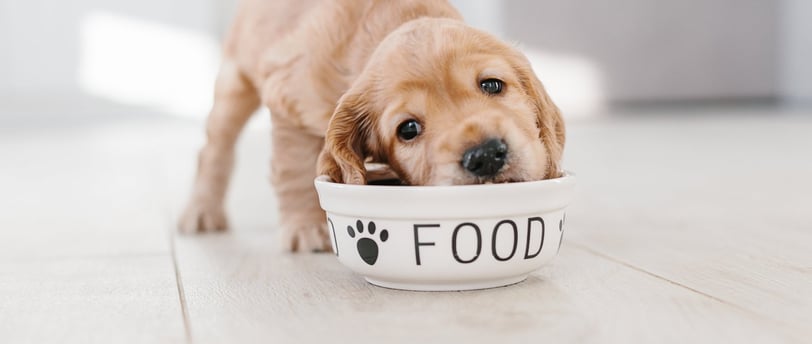The Ultimate Guide to Choosing the Best Dog Food for Your Furry Friend
11/26/20243 min read


The Ultimate Guide to Choosing the Best Dog Food for Your Furry Friend
As a dog owner, one of the most important decisions you’ll make for your furry companion is what to feed them. Proper nutrition not only keeps your dog healthy and energetic but also ensures they live a long, happy life. With so many options on the market, choosing the right dog food can feel overwhelming. In this guide, we’ll explore everything you need to know about dog food, from understanding your dog’s nutritional needs to identifying the best types of food.
Understanding Your Dog’s Nutritional Needs
Dogs, like humans, require a balanced diet to thrive. The essential components of dog nutrition include:
1. Proteins
Proteins are the building blocks of your dog’s muscles, skin, and fur. Look for high-quality sources of protein like chicken, beef, fish, or lamb in their food.
2. Fats
Fats provide energy and help maintain a shiny coat and healthy skin. Omega-3 and Omega-6 fatty acids are particularly beneficial.
3. Carbohydrates
Carbs supply energy and fiber. Ingredients like brown rice, sweet potatoes, and oats are excellent sources.
4. Vitamins and Minerals
These are essential for overall health, including strong bones, healthy teeth, and a robust immune system. Fruits and vegetables like carrots, spinach, and blueberries can be great additions.
5. Water
Hydration is crucial. Always ensure your dog has access to fresh, clean water.
Types of Dog Food
When shopping for dog food, you’ll encounter various options. Each has its pros and cons:
1. Dry Dog Food (Kibble)
- Pros: Convenient, long shelf life, helps with dental health.
- Cons: May lack moisture, which some dogs need.
2. Wet Dog Food (Canned)
- Pros: High in moisture, more palatable for picky eaters.
- Cons: More expensive, shorter shelf life once opened.
3. Raw Dog Food
- Pros: Mimics a dog’s natural diet, often grain-free.
- Cons: Risk of bacterial contamination, requires careful preparation.
4. Homemade Dog Food
- Pros: Complete control over ingredients.
- Cons: Time-consuming, requires careful balance of nutrients.
5. Specialized Dog Food
- For dogs with specific health conditions, such as allergies or kidney problems, there are specialized diets formulated by vets.
How to Read a Dog Food Label
Understanding dog food labels is critical to making informed choices. Here’s what to look for:
- Ingredients List: The first few ingredients should be high-quality protein sources.
- Guaranteed Analysis: Indicates the percentages of protein, fat, fiber, and moisture.
- AAFCO Statement: Ensures the food meets the minimum nutritional requirements.
Tips for Choosing the Right Dog Food
1. Consider Your Dog’s Age and Size: Puppies, adult dogs, and seniors have different dietary needs. Similarly, small breeds and large breeds benefit from tailored diets.
2. Take Allergies Into Account: If your dog has allergies, look for hypoallergenic options or limited-ingredient diets.
3. Talk to Your Vet: Your veterinarian can recommend the best food based on your dog’s health, weight, and activity level.
4. Transition Gradually: When switching dog food, mix the new food with the old food over a week to avoid digestive issues.
Foods to Avoid Feeding Your Dog
While some human foods are safe for dogs, others can be harmful or even deadly. Avoid feeding your dog the following:
- Chocolate: Contains theobromine, which is toxic to dogs.
- Grapes and Raisins: Can cause kidney failure.
- Onions and Garlic: Damage red blood cells, leading to anemia.
- Avocado: Contains persin, which can be harmful in large amounts.
- Alcohol: Even small amounts can be toxic.
- Caffeine: Can lead to restlessness, rapid heart rate, and seizures.
- Xylitol: Found in sugar-free gum and candy, it can cause a dangerous drop in blood sugar.
- Cooked Bones: Can splinter and cause internal injuries.
Homemade Dog Food Recipe
Here’s a simple recipe to try if you want to prepare a homemade meal for your dog:
Ingredients:
- 2 cups of cooked lean ground chicken
- 1 cup of cooked brown rice
- 1/2 cup of steamed carrots
- 1/2 cup of steamed peas
- 1 tablespoon of fish oil (optional)
Instructions:
1. Combine all the ingredients in a large bowl.
2. Allow the food to cool before serving.
3. Store leftovers in the refrigerator for up to three days.
Conclusion
Feeding your dog a healthy, balanced diet is one of the best ways to show your love and care. By understanding their nutritional needs and exploring the available options, you can ensure they stay happy and healthy for years to come. Whether you choose kibble, wet food, or homemade meals, always prioritize quality ingredients and consult your vet for tailored advice.
Remember, a well-fed dog is a happy dog!
#Shaky Tails
